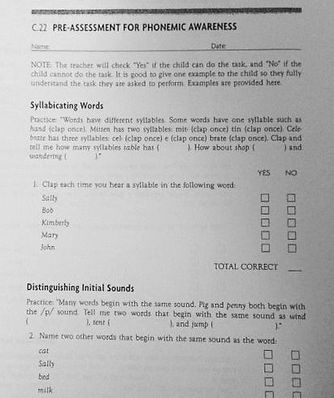
MEDCI

READING

Phonemic Awareness
What:
Phonemic awareness is the ability to hear, identify, and manipulate individual sounds (phonemes) in spoken words.
Who:
Typically, a phonemic awareness assessment is used for students in kindergarten through second grade. However, when a student is struggling at reading, it may be utilized in higher grades.
Why:
Because phonemic awareness is at the foundation of the ability to read, this assessment helps identify weakness in this area and helps determine whether more focus should be spent on phonics instruction. The goal of phonics instruction is to help students learn the alphabetic principle –the understanding that there are systematic and predictable relationships between written letters and spoken sounds.
When:
A phonemic awareness assessment can be used with struggling readers when gaps are found in their reading abilities. It can be used at any time when working with struggling readers.
How:
-
Obtain a phonemic awareness assessment.
-
Mark all items either correct or incorrect as the student responds.
-
Write all students gestures, comments, etc. throughout the test as well.
-
Interpret - use the percentages to determine strengths and weaknesses.